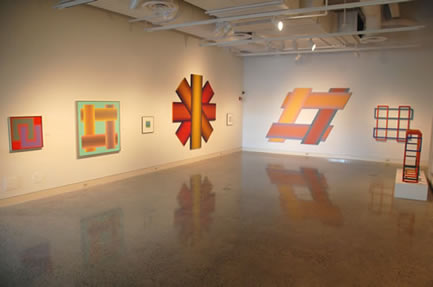Richard Anuszkiewicz: “Recent Paintings and Sculpture” is currently running at the Eire Art Museum, 411 State Street, Eire PA 16501 (USA). The exhibition is housed in the main gallery and runs from July 14th through to November 25th 2012.

Anuszkiewicz was born in Eire and studied art at the Eire Technical High School under Joseph Plavcan. Although now living in Englewood, N.J., Anuskiewicz, 82, maintains a strong connection with his home town.
If you are anywhere near Eire then I would strongly recommend that you go to see the work of one of the true Op Art pioneers. Richard Anuszkiewicz’s works are held in museum collections all over the world, and he remains to this day one of America’s most revered painters.
Hours
Closed on Mondays
Tuesday – Thursday, 11 am to 5 pm
Friday, 11 am to 9 pm
Saturday, 11 am to 5 pm
Sunday, 1 pm to 5 pm
Admission
Members – Free
Adults – $7
Seniors Citizens & Students – $5
Children under 5 – Free
“When the brilliant colors and geometric precision of Op Art appeared on the art scene in the mid-1960s, Erie native Richard Anuszkiewicz was the movement’s foremost American painter. His artwork explores the relationship between color and space, creating art that subtly challenges the audience’s visual perceptions. Over the years, Anuszkiewicz’s art has evolved, but he remains committed to the principles of mathematics, architecture and color theory that have always been essential to his work.
This exhibit draws from Anuszkiewicz’s recent works and shows his progression from paintings to sculpture from the 1980s to present. “I sometimes refer to my painting as architectural, because I work out my plan, I work out my idea, and then I go about constructing the painting,” Anuszkiewicz said of his work in the 1970s. At this time he began to break out of a strictly rectangular format, creating knot-shaped and plus-sign shaped works, leading him to paint on shaped canvases. Shaped canvases gave way to painted wood, and eventually steel, constructions. Many of these works bear the title “Translumina,” and in these works, he begins to concern himself more with illusions of transparency rather than color transfer. As this series developed, a form of sculpture emerged that resembles colored drawings in the air—transparent intersecting boxes suggesting forms similar to his shaped canvases.”

